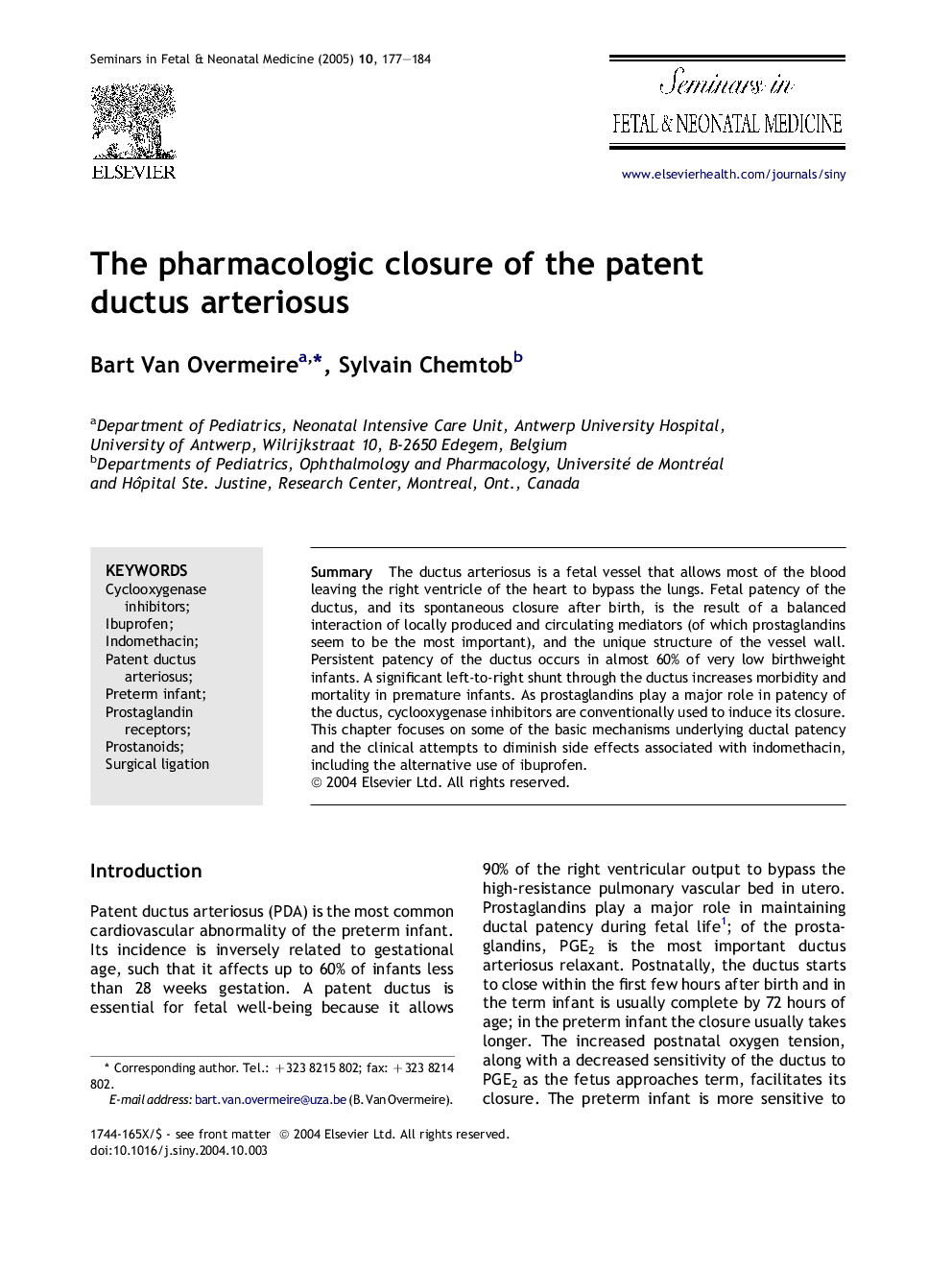| Article ID | Journal | Published Year | Pages | File Type |
|---|---|---|---|---|
| 9336074 | Seminars in Fetal and Neonatal Medicine | 2005 | 8 Pages |
Abstract
The ductus arteriosus is a fetal vessel that allows most of the blood leaving the right ventricle of the heart to bypass the lungs. Fetal patency of the ductus, and its spontaneous closure after birth, is the result of a balanced interaction of locally produced and circulating mediators (of which prostaglandins seem to be the most important), and the unique structure of the vessel wall. Persistent patency of the ductus occurs in almost 60% of very low birthweight infants. A significant left-to-right shunt through the ductus increases morbidity and mortality in premature infants. As prostaglandins play a major role in patency of the ductus, cyclooxygenase inhibitors are conventionally used to induce its closure. This chapter focuses on some of the basic mechanisms underlying ductal patency and the clinical attempts to diminish side effects associated with indomethacin, including the alternative use of ibuprofen.
Keywords
Related Topics
Health Sciences
Medicine and Dentistry
Obstetrics, Gynecology and Women's Health
Authors
Bart Van Overmeire, Sylvain Chemtob,
